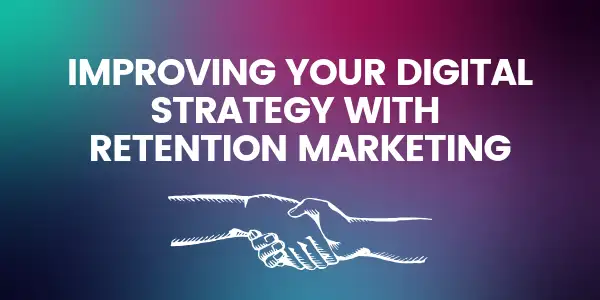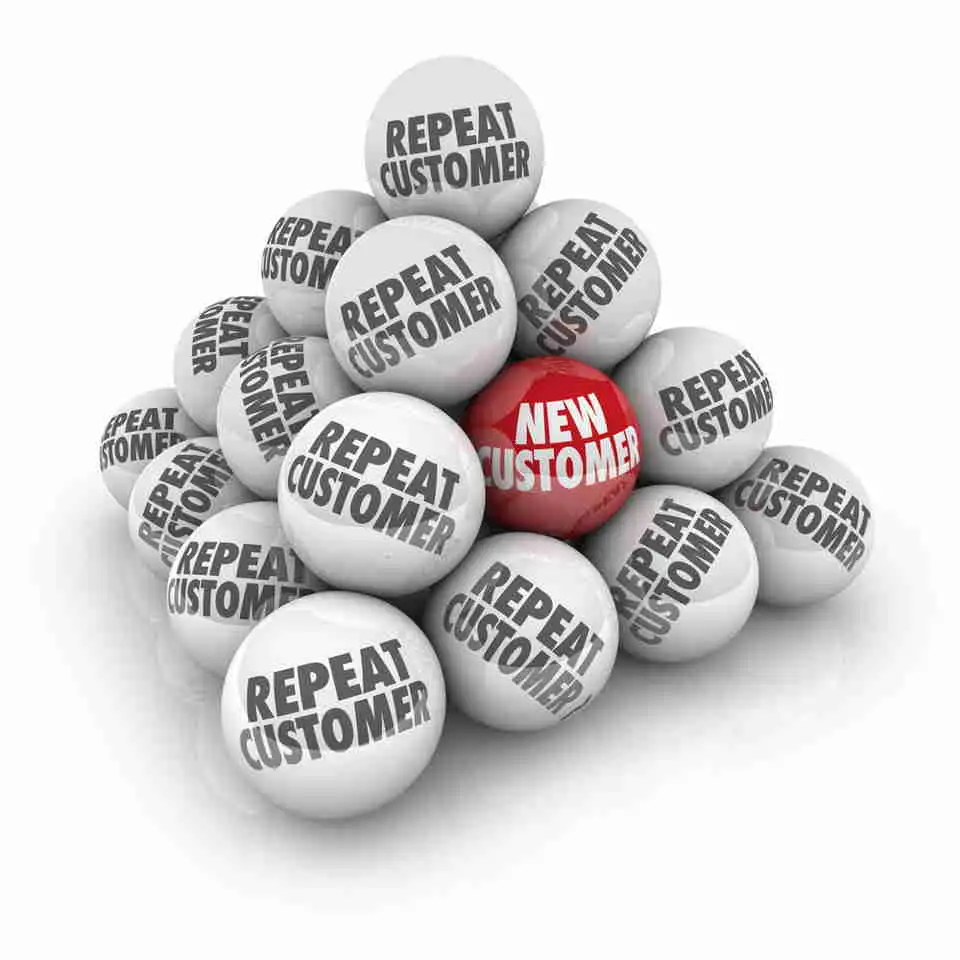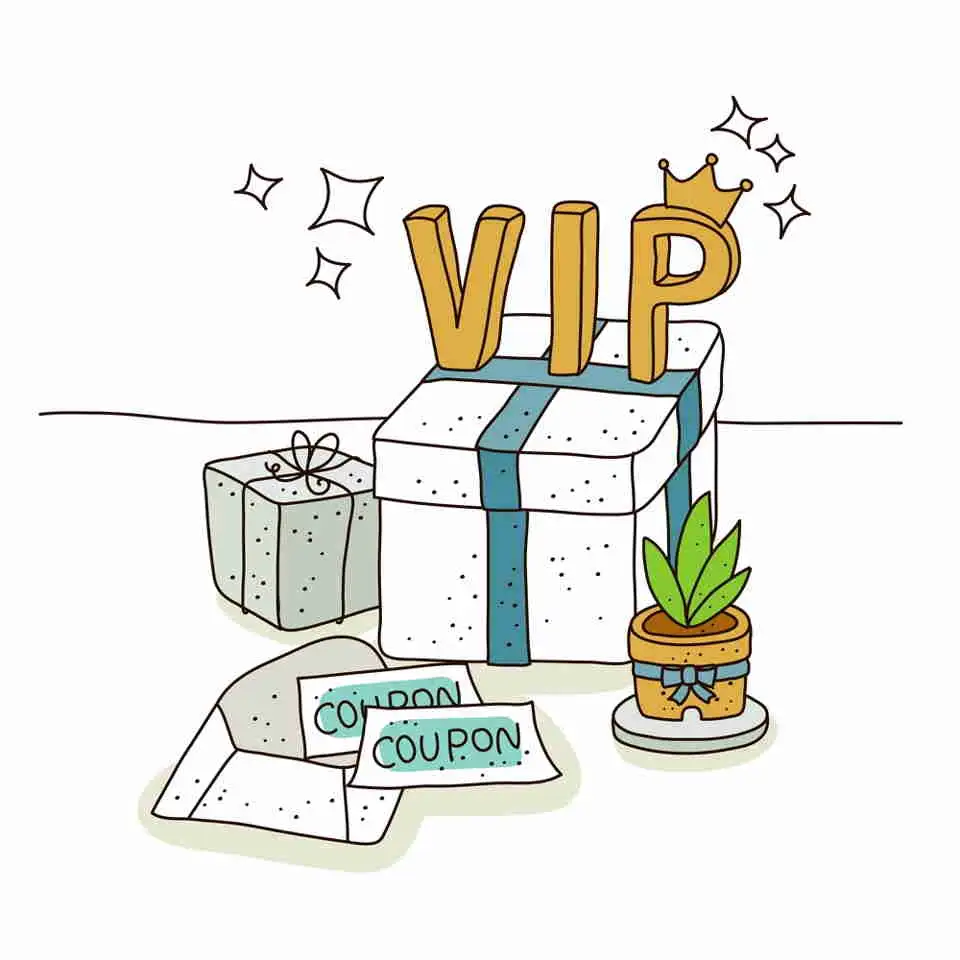
Improving your Digital Strategy with Retention Marketing
WHAT IS RETENTION MARKETING?
Retention marketing strategies place great emphasis on creating loyal customers who continually engage with your business following their first purchase, while increasing their monetary contributions to your business over time – whether it be through purchase volume or through shifting from less expensive to more costly products. The success of such a marketing campaign is typically measured in relation to the retention rate.
A study published in the Harvard Business Review concluded that companies can increase their profits by 25% to 95% simply through improving their customer retention rates by only 5%.
Perhaps an even more significant finding is that the cost of acquiring a new customer is typically much higher for online-only businesses compared to competitors with both online and physical stores.
This provides a huge incentive, for pure-play companies especially, to focus more of their resources on retention marketing frameworks. They will want to convert a large part of the one-time purchasers to loyal clients since, in industries such as clothing electronic retailing for example, it costs them anywhere from 20% to 40% more to attract fresh buyers when compared to a company with both physical and online stores.
For the purposes of this post, we need to define a few key terms: shoppers, one-time buyers, returning purchasers, and repeat buyers.
Shoppers - site visitors who have either never purchased upon visiting the site or who have only made one purchase;
One-time buyers - those visitors who have only made one purchase on your website without ever visiting the site again;
Returning purchasers - site visitors who upon making one purchase, subsequently visit the site and either make one more purchase or do not buy anything;
Repeat buyers - those clients who have made purchases on the site at least twice and have then returned to the site at least once following their second purchase.

Photo credit: iQoncept/Shutterstock
In order to understand how to construct efficient retention marketing strategies one must look to build brand loyalty with one-time buyers, returning purchasers, and repeat buyers. In doing so, your business will maximise the potential of these three demographics in terms of increasing revenue per visitor (RPV). As we shall see, targeting these groups will also have a positive effect on customer perceived value. The growing reputation of your brand will both bring in new customers and convert shoppers into returning purchasers.
Once you understand how value marketing and retention marketing can both increase RPV in returning customers and lead to more successful customer acquisition campaigns, you will be well on your way to maximising the potential of returning and repeat purchasers for your business' growth.

Photo credit: Costello77/Shutterstock
WHAT IS VALUE MARKETING?
In marketing, value is identified by the customer. Thus, customer-perceived value, the only real value in marketing, exists in the imagination of each and every individual who has come into contact with the brand. After all, the ultimate success or failure of a marketing campaign is determined by whether or not customers believe the product can satisfy their needs while also justifying its price.
Each individual, upon being exposed to your marketing campaign will interpret it differently. This creates a problem as the message you broadcast may be misinterpreted by some.
Research can provide valuable insights into how different demographics will react when exposed to a particular marketing strategy. However, these insights only provide one piece of a complex and volatile puzzle.
VALUE AND RETENTION MARKETING: THE PERFECT STORM
Retention marketing and customer-perceived value exist in a symbiotic relationship, and when approached correctly as part of a well-thought out marketing strategy, can complement one another and create loyal repeat customers.
The more value you are able to project unto your brand in the minds of your customers, the easier it will be to convert shoppers into repeat customers. And indeed, as you mould loyal repeat customers into existence, the perceived value of your brand increases as more and more people effectively become brand ambassadors – some more aware of their role than others.
As the father of modern advertising announced in the interwar period, “Men are rarely aware of the real reasons which motivate their actions.” Despite his recent villainization in popular culture, his words still ring true today.
According to Investp, customers who have already made a purchase are 50% more likely to give another product on your site a try when compared to a new customer. Furthermore, returning purchasers also spend 31% more than new ones.
In order to understand why returning and repeat buyers have higher RPV, we need to look at the two drivers behind this metric. RPV is a composite metric which takes into account both average order value (AOV) and conversion rate (CR). According to a study by Adobe, conversion rate is the main driver behind higher RPV, with the CR of returning purchasers five times higher and that of repeat buyers nine times higher than the level measured in shoppers. While increases in AOV are also recorded, these aren’t as significant a driver of growth, even if the same study recorded surges of 3% and 5% in returning and repeat buyers respectively compared to shoppers.
Furthermore, a business with 40% repeat customers will generate as much as 50% more revenue compared to a business in the same field with only 10% of clients falling into the repeat buyer category.
The bottom line is that most marketing efforts focus on the shopper segment as it is much larger than the other two. However, targeting returning and repeat buyers through retention marketing campaigns aimed at increasing brand loyalty is a much more profitable strategy. In fact, as the data presented above shows, return and repeat customers outclass shoppers regardless of the retail metric used.
Next, we’ll look at specific retention-marketing tactics and value marketing strategies which can increase your business’ revenue as well as the success of future client acquisition campaigns.
HOW TO EMPLOY RETENTION MARKETING THAT FOCUSES ON CUSTOMER-PERCEIVED VALUE
3 Effective Retention Marketing Strategies:
- Personalisation
- Second Purchase Incentivisation
- Budgeting Tweaks
Personalisation: Know Your Customers
It’s important to get to know your customer base on an individual level, in as much detail as possible. Using customer relationship management (CRM) software as well as articulating a comprehensive CRM strategy are ways in which businesses can manage and quantify their interactions with customers.
CRM software provides a plethora of statistics which quantify the interactions between your business and its clients. The insights provided by this piece of software can then be used in order to manage and improve business relationships with one-time buyers, returning purchasers and repeat buyers.

Photo credit: one photo/Shutterstock
CRM statistics allow you to analyse your retention marketing efforts and understand what works and what doesn’t for specific clients. Having access to these statistics whenever you’re planning your future customer retention marketing strategies will prove invaluable; you’ll be able to adopt a scientific approach when it comes to personalisation.
Incentivise Shoppers to Make the Second Purchase
The data seems to point towards an exponential growth commencing at the moment a shopper makes his first buy. While the chances of a one-time purchaser making an additional buy in the future are at 27%, repeat buyers who have already acquired three products have a 54% chance of making the fourth buy.
Businesses should focus their digital marketing strategy on targeting one-time buyers in order to incentivise further purchases.
Great Ways to Incentivise Shoppers:
- Targeted email campaigns offering personalised shopping lists based on the person’s first purchase;
- Offering discount vouchers to shoppers who have made a single purchase as a way to encourage further buys;
- Requesting customer feedback through a follow-up email sent shortly after their first purchase can be an efficient way to keep your brand at the forefront of the one-time buyer’s mind; gathering feedback will also augment your future marketing efforts;
- Sending out birthday emails to your one-time buyers can be a great tactic. According to a study by Experian, when compared to typical promotional mailings, birthday emails not only draw higher open and click rates, they also attain much higher revenue (342% more) and transaction rates (481% more).

Photo credit: Viktoria Kurpas/Shutterstock
Devote More of your Marketing Budget to One-Time Buyers, Returning Purchasers and Return Buyers
We’ve touched on the interaction between retention marketing, brand loyalty, and acquisition of new customers above. What should be added is that providing perks to people in these three categories, and perhaps using this as part of your customer acquisition campaigns is an excellent approach.
Creating a VIP client club, entry into which is dependent on having made at least four or five purchases from the site in the past year, could be a good way to drive further purchases in one-time buyers as well as in more loyal customers.
Members of one such VIP club could benefit from free shipping, access to private discounts, or even exclusive or early access purchase rights for highly coveted products.
By providing all of these incentives and advertising the perks available to loyal customers, you will encourage repeat purchases while also adding a new dimension to your client acquisition strategy. Prospective clients will be attracted by your businesses’ treatment of loyal customers, adding a new layer of appeal to your brand.

Photo credit: KPG Ivary/Shutterstock
THE BIGGER PICTURE
Adopting a big picture approach which incorporates as many metrics as possible in order to increase brand loyalty and retention rate is the best tactic. The reason why repeat customers spend more than shoppers is quite straightforward:
- they are familiar with your brand and perhaps already identify with it,
- they trust your business to deliver the products on time and in good condition,
- having already created an account and made a purchase, they are more familiar with your website and have an easier time finding their way around it.
Your existing customers are not only going to spend more on future purchases, they will also build your brand value and can be leveraged in order to increase brand loyalty. Using the perks you offer returning and repeat buyers as part of your client acquisition marketing strategy will provide an additional angle to approach prospective customers. If your business is in its infancy, you first need to think about building brand awareness before you can start engaging in retention marketing strategies that increase brand loyalty.
